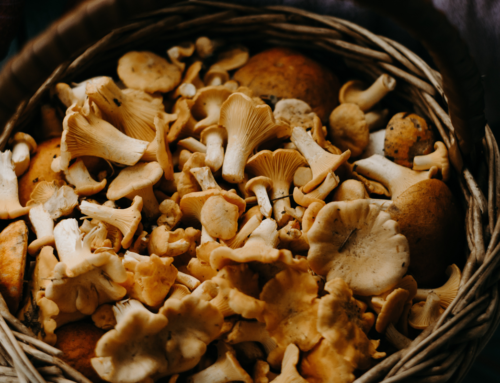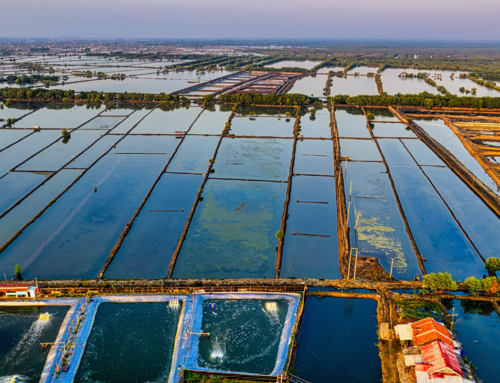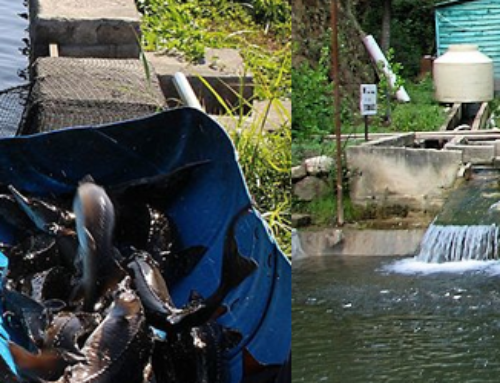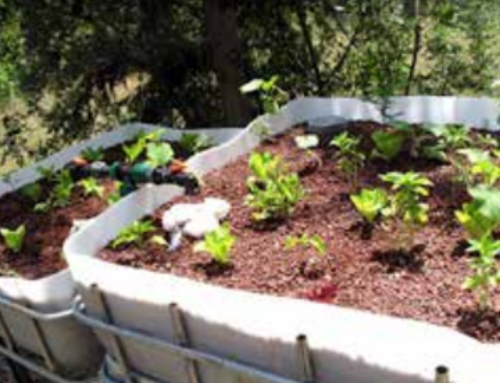Sustainable Seafood Production
Aquaponic systems are recirculating aquaculture systems that incorporate the production of plants without soil. Recirculating systems are designed to raise large quantities of fish in relatively small volumes of water by treating the water to remove toxic waste products and then reusing it.
Aquaponics, the combined culture of fish and plants in recirculating systems, has become increasingly popular.
 In the process of reusing the water many times, non-toxic nutrients and organic matter accumulate. These metabolic by-products need not be wasted if they are channeled into secondary crops that have economic value and benefit the primary fish production system.
In the process of reusing the water many times, non-toxic nutrients and organic matter accumulate. These metabolic by-products need not be wasted if they are channeled into secondary crops that have economic value and benefit the primary fish production system.
System design
The design of aquaponic systems closely mirrors that of recirculating systems in general, with the addition of a hydroponic component and some mechanical filters for removing solids.
Fine solids and dissolved organic matter generally do not reach levels that require foam fractionation if aquaponic systems have the recommended design ratio.
The essential elements of an aquaponic system are the fish-rearing tank, a settleable and suspended solids removal component, a biofilter, a hydroponic component, and a sump.
1- Fish-rearing tank.
Standard fish farming practice, primarily feeding the fish.
2- Filtration
Effluent from the fish-rearing tank is treated first to reduce organic matter in the form of settleable and suspended solids. Next, the culture water is treated to remove ammonia and nitrate in a biofilter.
3- Hydroponic
Then, water flows through the hydroponic unit where some dissolved nutrients are taken up by plants and additional ammonia and nitrite are removed by bacteria growing on the sides of the tank and the underside of the polystyrene sheets.
4- Sump
Finally, water collects in a reservoir (sump) and is returned to the rearing tank. The location of the sump vary subject to the overall layout of the system.
- Rearing fish tank
- First Clarifier tank, solids removal
- Second filter tank, biofilter
- Hydroponic
- Sumps
Optimum arrangement of aquaponic system components (not to scale).
Combining biofiltration with hydroponics is a desirable goal because eliminating the expense of a separate biofilter is one of the main advantages of aquaponics.
Combined biofilter and hydroponic systems
The biofilter and hydroponic components can be combined by using plant support media such as gravel or sand that also functions as biofilter media. Raft hydroponics, which consists of floating sheets of poly- styrene and net pots for plant support, can also provide sufficient biofiltration if the plant production area is large enough. Combining biofiltration with hydroponics is a desirable goal because eliminating the expense of a separate biofilter is one of the main advantages of aquaponics. An alternative design combines solids removal, biofiltration and hydroponics in one unit. The hydroponic support media (pea gravel or coarse sand) captures solids and provides surface area for fixed- film nitrification, although with this design it is important not to overload the unit with suspended solids. As an example, Figures on the right, show the commercial-scale aquaponic system that has been developed at the University of the Virgin Islands (UVI). It employs raft hydroponics.
Fish species suitable for aquaponic
Tilapia is the fish species most commonly cultured in aquaponic systems. Although some aquaponic systems have used channel catfish, largemouth bass, crappies, rainbow trout, pacu, common carp, koi carp, goldfish, Asian sea bass (barramundi) and Murray cod. Most freshwater species, which can tolerate crowding, will do well in aquaponic systems (including ornamental fish).
1- Fish Production
To recover the high capital cost and operating expenses of aquaponic systems and earn a profit, both the fish-rearing and the hydroponic vegetable components must be operated continuously near maximum production capacity. The maximum biomass of fish a system can support without restricting fish growth is called the critical standing crop. Operating a system near its critical standing crop uses space efficiently, maximises production and reduces variation in the daily feed input to the system, an important factor in sizing the hydroponic component. There are three stocking methods that can maintain fish biomass near the critical standing crop: sequential rearing, stock splitting and multiple rearing units.
2- Solid Removal and Biofiltration
A major concern in aquaponic systems is the removal of ammonia, a metabolic waste product excreted through the gills of fish. Ammonia will accumulate and reach toxic levels unless it is removed by the process of nitrification (referred to more generally as biofiltration), in which ammonia is oxidised first to nitrite, which is toxic, and then to nitrate, which is relatively non-toxic.
3- Hydroponic subsystems
A number of hydroponic subsystems have been used in aquaponics. Gravel hydroponic subsystems are common in small operations. To ensure adequate aeration of plant roots, gravel beds have been operated in a reciprocating (ebb and flow) mode, where the beds are alternately flooded and drained, or in a non-flooded state, where culture water is applied continuously to the base of the individual plants through small- diameter plastic tubing. Depending on its composition, gravel can provide some nutrients for plant growth (e.g., calcium is slowly released as the gravel reacts with acid produced during nitrification).
4- Sump in aquaponics systems
Water flows by gravity from gravel, sand and raft hydroponic subsystems to a sump, which is the lowest point in the system. The sump contains a pump or pump inlet that returns the treated culture water to the rearing tanks.








